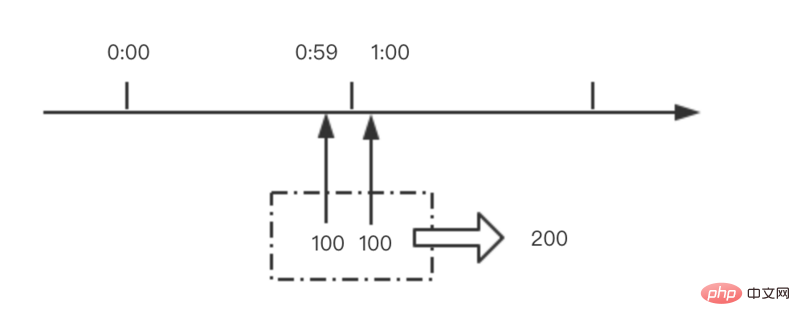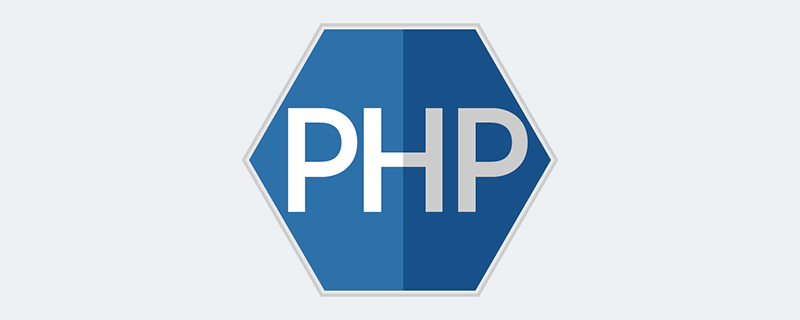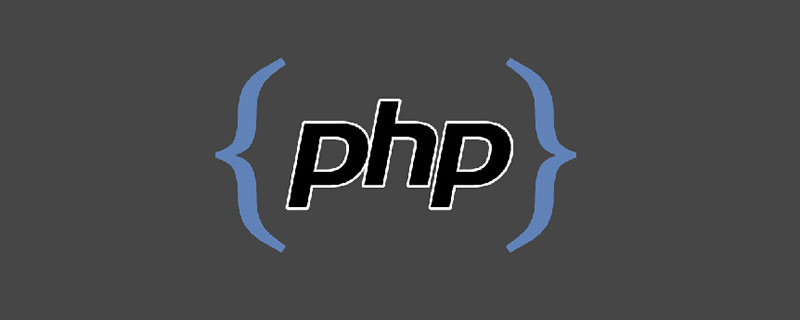 Operation and Maintenance
Operation and Maintenance Nginx
Nginx Security risks and management best practices for Nginx security downgrade
Security risks and management best practices for Nginx security downgradeIn the modern Internet architecture, Nginx, as an advanced web server and reverse proxy tool, is increasingly used in enterprise production environments. However, in actual use, administrators need to perform security downgrade operations on Nginx due to various reasons. Security downgrade means minimizing the security threats that the system exposes to the outside world while ensuring normal system functions. This article will explore the security risks and management best practices of using Nginx for secure downgrade.
1. Security Risks
When using Nginx to perform security downgrade operations, it will have a greater impact on the security of the server system:
- Reduce the security level: When administrators need to turn off some high-security access controls or use unsafe parameter configurations, the security level of the system will be reduced, making it easy for attackers to exploit vulnerabilities to enter the system and cause losses.
- Increase the attack surface: Some unnecessary modules and functions will increase the attack surface of the system. For example, if the HTTP keep-alive function is turned on, attackers will use long connections to carry out DDoS attacks; turning on static file access will make it easier for attackers to obtain information in the system, including source code files, etc.
- Reduced performance: If administrators use Nginx to rewrite rules too much, it will cause system performance to degrade and make it easier for DDoS attacks to attack the system.
2. Management best practices
In view of the security downgrade of Nginx, administrators need to adopt the following management best practices to reduce system security risks.
- Turn off unnecessary modules and functions: Administrators need to turn off some unnecessary modules and functions to reduce the attack surface of the system. For example, disabling nginx's php-fpm module, disabling nginx's CRLF injection, etc. can be achieved by commenting out the corresponding lines of code in the configuration file.
- Check the Nginx configuration file: Administrators need to regularly check the Nginx configuration file to ensure that the configuration file does not contain unnecessary and unsafe code. For example, Nginx is prohibited from directly exposing the PHP configuration file, the PHP configuration file is placed in a non-web root directory, and communicates with the PHP-fpm process through the FastCGI protocol.
- Reasonable use of nginx security mechanisms: Administrators need to make reasonable use of nginx security mechanisms, such as syslog, tcpdump, Wireshark, etc. These tools can provide useful information when a system is under attack, helping administrators identify and respond to security incidents.
- Ensure timely system upgrade: Administrators need to ensure timely upgrade of Nginx and other components and systems. Timely upgrades can avoid the risk of being exploited by attackers due to vulnerabilities, and can avoid redundant security downgrade operations.
- Record security downgrade measures in logs: Administrators need to record all security downgrade measures in logs based on information such as execution time, cause, effect, etc., so that they can be easily found when security problems occur in the system.
To sum up, Nginx security downgrade can be used as one of the important means of security management. However, administrators need to be aware that security downgrades are also risky, and they need to minimize the security threats that the system exposes to the outside world while ensuring normal system functions. Therefore, administrators need to adopt some management best practices to reduce security risks and ensure system security.
The above is the detailed content of Security risks and management best practices for Nginx security downgrade. For more information, please follow other related articles on the PHP Chinese website!
 内存飙升!记一次nginx拦截爬虫Mar 30, 2023 pm 04:35 PM
内存飙升!记一次nginx拦截爬虫Mar 30, 2023 pm 04:35 PM本篇文章给大家带来了关于nginx的相关知识,其中主要介绍了nginx拦截爬虫相关的,感兴趣的朋友下面一起来看一下吧,希望对大家有帮助。
 nginx限流模块源码分析May 11, 2023 pm 06:16 PM
nginx限流模块源码分析May 11, 2023 pm 06:16 PM高并发系统有三把利器:缓存、降级和限流;限流的目的是通过对并发访问/请求进行限速来保护系统,一旦达到限制速率则可以拒绝服务(定向到错误页)、排队等待(秒杀)、降级(返回兜底数据或默认数据);高并发系统常见的限流有:限制总并发数(数据库连接池)、限制瞬时并发数(如nginx的limit_conn模块,用来限制瞬时并发连接数)、限制时间窗口内的平均速率(nginx的limit_req模块,用来限制每秒的平均速率);另外还可以根据网络连接数、网络流量、cpu或内存负载等来限流。1.限流算法最简单粗暴的
 nginx+rsync+inotify怎么配置实现负载均衡May 11, 2023 pm 03:37 PM
nginx+rsync+inotify怎么配置实现负载均衡May 11, 2023 pm 03:37 PM实验环境前端nginx:ip192.168.6.242,对后端的wordpress网站做反向代理实现复杂均衡后端nginx:ip192.168.6.36,192.168.6.205都部署wordpress,并使用相同的数据库1、在后端的两个wordpress上配置rsync+inotify,两服务器都开启rsync服务,并且通过inotify分别向对方同步数据下面配置192.168.6.205这台服务器vim/etc/rsyncd.confuid=nginxgid=nginxport=873ho
 nginx php403错误怎么解决Nov 23, 2022 am 09:59 AM
nginx php403错误怎么解决Nov 23, 2022 am 09:59 AMnginx php403错误的解决办法:1、修改文件权限或开启selinux;2、修改php-fpm.conf,加入需要的文件扩展名;3、修改php.ini内容为“cgi.fix_pathinfo = 0”;4、重启php-fpm即可。
 如何解决跨域?常见解决方案浅析Apr 25, 2023 pm 07:57 PM
如何解决跨域?常见解决方案浅析Apr 25, 2023 pm 07:57 PM跨域是开发中经常会遇到的一个场景,也是面试中经常会讨论的一个问题。掌握常见的跨域解决方案及其背后的原理,不仅可以提高我们的开发效率,还能在面试中表现的更加
 nginx部署react刷新404怎么办Jan 03, 2023 pm 01:41 PM
nginx部署react刷新404怎么办Jan 03, 2023 pm 01:41 PMnginx部署react刷新404的解决办法:1、修改Nginx配置为“server {listen 80;server_name https://www.xxx.com;location / {root xxx;index index.html index.htm;...}”;2、刷新路由,按当前路径去nginx加载页面即可。
 Linux系统下如何为Nginx安装多版本PHPMay 11, 2023 pm 07:34 PM
Linux系统下如何为Nginx安装多版本PHPMay 11, 2023 pm 07:34 PMlinux版本:64位centos6.4nginx版本:nginx1.8.0php版本:php5.5.28&php5.4.44注意假如php5.5是主版本已经安装在/usr/local/php目录下,那么再安装其他版本的php再指定不同安装目录即可。安装php#wgethttp://cn2.php.net/get/php-5.4.44.tar.gz/from/this/mirror#tarzxvfphp-5.4.44.tar.gz#cdphp-5.4.44#./configure--pr
 nginx怎么禁止访问phpNov 22, 2022 am 09:52 AM
nginx怎么禁止访问phpNov 22, 2022 am 09:52 AMnginx禁止访问php的方法:1、配置nginx,禁止解析指定目录下的指定程序;2、将“location ~^/images/.*\.(php|php5|sh|pl|py)${deny all...}”语句放置在server标签内即可。


Hot AI Tools

Undresser.AI Undress
AI-powered app for creating realistic nude photos

AI Clothes Remover
Online AI tool for removing clothes from photos.

Undress AI Tool
Undress images for free

Clothoff.io
AI clothes remover

AI Hentai Generator
Generate AI Hentai for free.

Hot Article

Hot Tools

ZendStudio 13.5.1 Mac
Powerful PHP integrated development environment

mPDF
mPDF is a PHP library that can generate PDF files from UTF-8 encoded HTML. The original author, Ian Back, wrote mPDF to output PDF files "on the fly" from his website and handle different languages. It is slower than original scripts like HTML2FPDF and produces larger files when using Unicode fonts, but supports CSS styles etc. and has a lot of enhancements. Supports almost all languages, including RTL (Arabic and Hebrew) and CJK (Chinese, Japanese and Korean). Supports nested block-level elements (such as P, DIV),

SecLists
SecLists is the ultimate security tester's companion. It is a collection of various types of lists that are frequently used during security assessments, all in one place. SecLists helps make security testing more efficient and productive by conveniently providing all the lists a security tester might need. List types include usernames, passwords, URLs, fuzzing payloads, sensitive data patterns, web shells, and more. The tester can simply pull this repository onto a new test machine and he will have access to every type of list he needs.

WebStorm Mac version
Useful JavaScript development tools

DVWA
Damn Vulnerable Web App (DVWA) is a PHP/MySQL web application that is very vulnerable. Its main goals are to be an aid for security professionals to test their skills and tools in a legal environment, to help web developers better understand the process of securing web applications, and to help teachers/students teach/learn in a classroom environment Web application security. The goal of DVWA is to practice some of the most common web vulnerabilities through a simple and straightforward interface, with varying degrees of difficulty. Please note that this software





